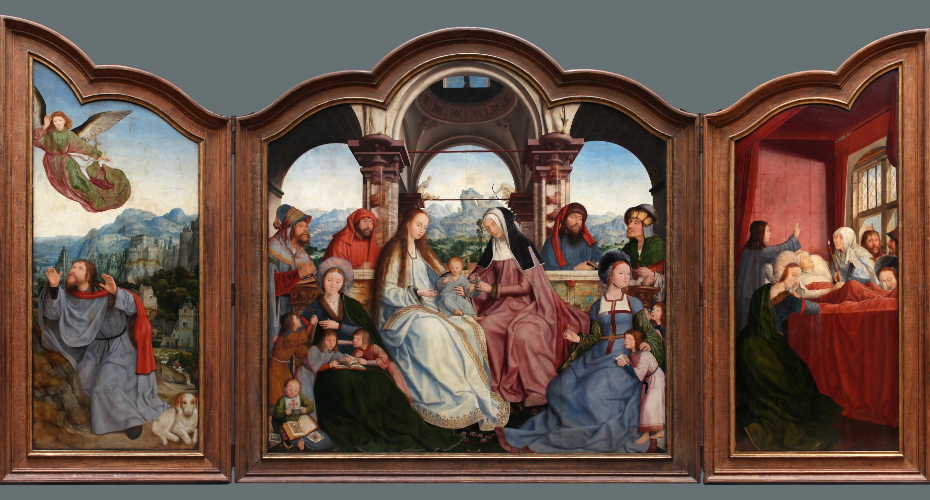Medieval retellings of the birth of the Virgin Mary suggest the Church was understanding of infertility

Triptyque de la confrérie de Sainte-Anne à Louvain. Quinten Metsys, Public domain, via Wikimedia Commons
Stories retelling the birth of the Virgin Mary reveal that the Church was more forgiving of infertility than the general public during the Medieval era.
At a time when societal attitudes often equated infertility with a punishment from God or a sign of sinfulness, key religious literature that would have been used as the basis for sermons took a more compassionate approach.
By focusing on the social exclusion and sadness felt by Mary’s parents, Joachim and Anne, who were said to have been married for twenty years before they conceived Mary, books such as The Golden Legend by Jacobus de Voragine sought to empathise with the plight of childless couples and offer a kinder interpretation.
These conclusions are based on new research by Professor Catherine Rider, a historian specialising in Medieval infertility and magic at the University of Exeter, and funded by a British Academy/Leverhulme Senior Research Fellowship. This has included studying several 14th and 15th century English manuscripts that were themselves inspired by The Golden Legend.
“We have a good understanding of the medical theories relating to infertility that were held at that time, theories which often ascribed the problem to imbalances in the humours, especially a lack of heat in the man’s or woman’s body,” says Professor Rider, of Exeter’s Department of Archaeology and History. “But very few first-hand accounts survive from couples who were struggling to conceive and so often we don’t know how they felt or whether they were left at the margins of the Christian community.
“By focusing on how stories about the miraculous conception of the Virgin Mary were retold in late medieval England, we can use religious history as a lens to gauge the Church’s stance on the subject.”
Professor Rider consulted modern printed editions of the books and visited the British Library and Cambridge University Library to study some of the original 14th and 15th-century manuscripts. These included not only The Golden Legend – a hugely popular collection of saints’ lives compiled in the 1200s – but also Festial, a collection of sermons for saints’ feast days probably written in the 1380s by John Mirk, a priest and Augustinian canon; and The Life of St Anne, written in verse form by Osbern Bokenham for a wealthy couple, John and Katherine Denston, who were themselves struggling to have a child.
In The Golden Legend, Mary’s father Joachim is humiliated by a priest at The Temple of Jerusalem, prompting him to not return home. Later, he is consoled by an Angel and reassured that God does not punish ‘nature’. Professor Rider says that this presentation of infertility from the perspective of the man was revealing.
“The Golden Legend reminds us that marginalization is a separate issue from causation or treatment, and so experiences of infertility might be complex and gendered in different ways – men might not be seen as the causes of a couple’s infertility so often but they experienced its effects nonetheless,” she said.
Professor Rider said that the population crash after the Black Death, and repeated bouts of high mortality through waves of the plague, would have sharpened the focus on fertility during the later fourteenth and fifteenth centuries. She added that the public would have been aware of royal childlessness, such as was the case with Richard II (d. 1399) and his wife Anne of Bohemia.
Both Festial and The Life of St Anne subtly differ in their portrayal of the emotional response of the characters, said Professor Rider, and the level of criticism aimed at the priest who publicly humiliated Joachim. This may have reflected, she said, the specific audiences that the books were written for, even to the point of Bokenham possibly writing for a patron who was struggling to conceive.
She said: “In this context, the many vernacular retellings of Anne and Joachim’s story might tell us something about the concerns of their lay readers and listeners, as well as the clergy who wrote them. Their tale offered a religious model of infertility with the potential to counter negative views which probably did exist in society at large.”
Infertility and the Margins of Society: Medieval Churchmen think about Reproductive Disorders is published in the latest edition of Studies in Church History.



